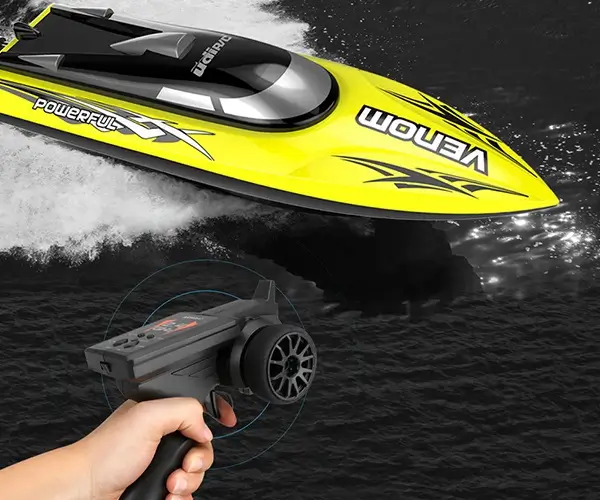part 1:
The Rise of Small DC Servo Motors: Tiny Components with Tremendous Impact
In the realm of modern automation, robotics, and electronics, the small DC servo motor has quietly become a cornerstone—powerful in performance yet diminutive in size. These miniature engines have transformed everything from precision robotics to hobbyist projects, showcasing how small devices can wield substantial influence. But what precisely makes these tiny motors so special? Let’s peel back the layers.

Understanding What a Small DC Servo Motor Is
At its core, a small DC servo motor combines the fundamental properties of a traditional DC motor with a built-in feedback system that allows for precise control of position, speed, and torque. Unlike standard motors that run continuously at a set speed or voltage, a servo motor is designed to respond dynamically to external commands, making it ideal for applications requiring a high level of accuracy.
A typical small DC servo motor consists of the motor itself, an integrated controller, and feedback components—most notably, a potentiometer or encoder. When a control signal is issued, the motor adjusts its position or speed accordingly, constantly correcting its movement to match the desired value. This feedback loop is what grants the servo its incredible positional accuracy and repeatability.
Why Size Matters in Modern Engineering
The beauty of the small DC servo motor lies not just in its control capabilities but also in its size. Today’s technological landscape demands components that are both powerful and compact. Whether it's a drone needing precise motor control in a limited space, a robotic arm with multiple joints, or even a wearable technological device—smaller form factors open doors to innovation.
Miniature motors are engineered to deliver robust performance while occupying minimal space. They’ve been optimized for efficiency, enabling longer battery life in portable devices, and their lightweight nature reduces overall system weight—an essential criterion in aerospace and mobile robotics.
Key Features and Advantages of Small DC Servo Motors
Precision and Control: With feedback mechanisms, small DC servo motors can achieve positional accuracy within fractions of a degree. This makes them particularly suited for tasks that demand exact movement, such as camera stabilization, CNC machinery, or prosthetic limbs.
High Torque in Compact Form: Despite their size, these motors can deliver a surprising amount of torque. That’s achieved through advanced winding techniques and high-quality materials that maximize power density.
Energy Efficiency: Small DC servo motors are designed to minimize power consumption, which is vital for portable and battery-powered applications. Their systems often include features like regenerative braking and efficient current management.
Durability and Reliability: Modern small servo motors are built to withstand rigorous conditions—vibration, temperature fluctuations, and continuous operation—thanks to durable construction and sophisticated electronics.
Ease of Integration: Their compact size and standard interfaces make these motors easy to embed into various designs. Many come with ready-to-use control boards or interfaces compatible with popular microcontrollers.
Applications Transforming the World
In the current technological wave, small DC servo motors are found in countless domains:
Robotics: From humanoid robots to industrial automation arms, these motors enable precise joint movements and responsive behaviors.
Aerospace: Lightweight, high-precision servos enhance the control of small satellite components and drones.
Medical Devices: Minimal invasive surgical robots and prosthetics depend on the accuracy and responsiveness of small servos.
Hobby Projects: From remote-controlled cars to CNC engraving machines, hobbyists leverage miniature servo motors to breathe life into their creations.
Consumer Electronics: Camera gimbals and stabilization systems rely on tiny servo motors for smooth operation.
The Engineering Behind Small DC Servo Motors
While their exterior looks simple, the inner workings of these motors are marvels of engineering. Key elements include:
Brushes and Commutator: Traditional brushed motors, which are still widely used in small servos due to their simplicity and compactness. They allow for efficient current switching and torque generation.
Feedback Devices: The heart of the servo’s accuracy. Encoders or potentiometers continuously inform the control system of the motor’s position, enabling real-time adjustments.
Control Circuitry: Embedded microcontrollers or driver modules interpret control signals (often PWM—pulse width modulation) and regulate current to the motor.
Gearboxes: To amplify torque without significantly increasing size, many small servo motors incorporate gear reductions, translating high-speed rotation into precise, low-speed, high-torque movement.
Challenges and Considerations
Despite their advantages, small DC servo motors do have limitations and design considerations:
Heat Dissipation: Compact size can lead to heat buildup—necessitating effective cooling strategies during high load or prolonged use.
Power Supply: Slight voltage fluctuations can impact performance, emphasizing the importance of stable power sources.
Cost and Complexity: Advanced feedback mechanisms and miniaturized components can drive up costs and complexity in manufacturing.
Wear and Tear: Mechanical components such as brushes may wear out over time, especially in high-duty-cycle applications.
The Future of Small DC Servo Motors
Engineering advances continue to push the envelope. Researchers and manufacturers are focusing on:
Materials Innovation: Developing lighter, stronger materials to enhance torque-to-weight ratios.
Sensor Integration: Incorporating stronger, less noisy sensors for even finer control.
Wireless Integration: Enabling remote operation and monitoring for industrial and consumer applications.
Energy Harvesting: Exploring ways for small servos to harness ambient energy, further improving efficiency and autonomy.
As automation accelerates and devices become increasingly miniaturized, the relevance of small DC servo motors is only set to grow. They embody the perfect marriage of size and performance—tiny yet mighty, precise and reliable, ready to power the next wave of technological innovation.
Established in 2005, Kpower has been dedicated to a professional compact motion unit manufacturer, headquartered in Dongguan, Guangdong Province, China.




































